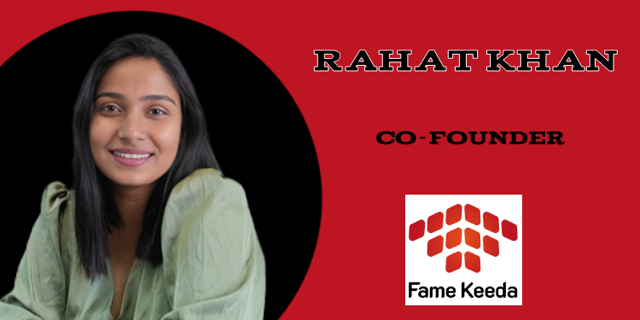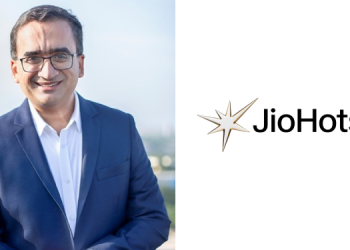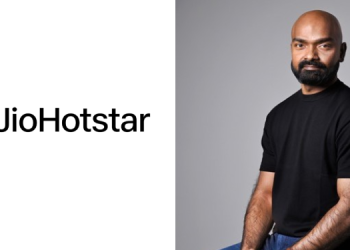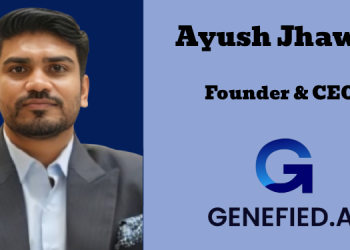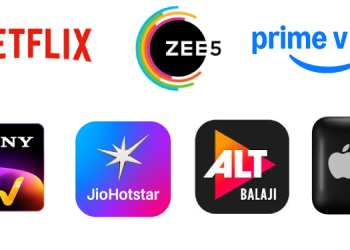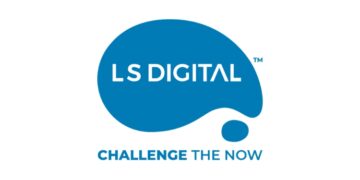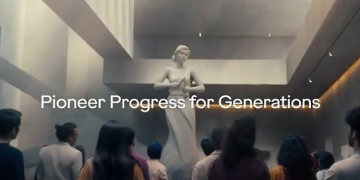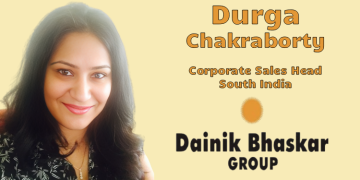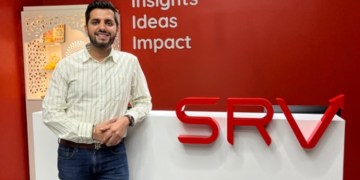Fame Keeda is a digital marketing agency, dedicated to delivering real business impact online by creating brand awareness, driving sales, and increasing visibility for clients. The agency says that it stands out by focusing entirely on the needs and goals of clients, ensuring tailored and effective marketing solutions.
Specialising in influencer marketing, Fame Keeda explains that it excels particularly in the tech, automobile, and finance sectors. We take pride in scaling influencer marketing activities for our clients with the same dedication and precision that we apply to the growth of our own agency. Our approach integrates traditional branding principles with innovative, creative, and data-driven solutions, making our marketing campaigns both impactful and measurable.
Medianews4u.com caught up with Rahat Khan, Co-Founder Fame Keeda:
1. What was the gap that Fame Keeda saw in the influencer marketing space when it launched?
From 2017-19, content creation really took off, and the biggest gap we noticed was that brands struggled to find genuine influencers and creators who were committed to authentically representing a brand. Long-term partnerships were a challenge, as many influencers lacked the setup or the streamlined workflow needed to effectively deliver a brand’s message. There was also a shortage of genuine relationships, making it tough for brands to find creators who could credibly promote their products.
Another gap was the lack of mediators like us to connect brands with the right influencers. There were plenty of influencer community platforms, but they didn’t offer the metrics brands needed to measure ROI. That’s why we entered the market with a “brands-first” mentality.
2. What progress has been made since in terms of client growth and revenue?
We’ve seen tremendous growth in terms of clients, social media presence, and brand visibility. Everyone’s shifting from traditional to digital media, and D2C brands have grown by 5-10x because they can now reach customers directly online.
There was a big boom from 2019-22, but the growth rate has slowed down a bit due to market saturation. Still, brands like m.Stock and PolicyBazaar from our client base are seeing tremendous growth.
Revenue from influencer marketing as a channel for brands has nearly tripled, though it could be even higher. Brand recall has played a huge role in this, as it’s easier for brands to establish themselves in consumers’ minds.
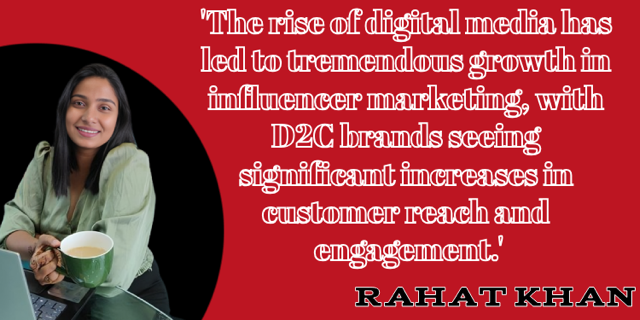
3. What are the agency’s views on the government guidelines for influencer marketing, especially influencers?
The guidelines have become more stringent because of the rise in malevolent activities, which means content creation is now heavily regulated. I strongly believe the government should focus more on educating citizens about digital safety, closing the knowledge gap between fraudsters and the general public. While some steps have been taken, there’s still a lot more to do.
When it comes to influencers, especially finfluencers, money is always a sensitive topic. People who lack financial literacy can easily fall for scams if they trust the wrong personalities. Education is key here. If people aren’t financially savvy, they’ll seek guidance from influencers. Unfortunately, not all influencers play by the rules, which is why government regulations are crucial. The government and credible personalities should share the responsibility of making people more financially aware.
4. Is there a better understanding today by brands on the role that influencer marketing can play?
Influencer marketing really took off with the rise of YouTube creators like PewDiePie, AIB, and Bhuvan Bam. As their audiences grew, brands started noticing the power these creators had. This trend then shifted to platforms like Instagram, Snapchat, and more.
Today, most brands have their own social media presence and aren’t afraid to create content to build their audience. Even if a company isn’t into influencer marketing, they usually have an in-house content marketing team. It’s not just about saving costs but rather it’s an educated investment in building a brand because they now understand the impact influencer marketing can have.
5. Any examples of recent work done by the agency that stands out?
One prominent example which stands out is our association with the American tech giant – Intel. They had approached us back in 2023 with the objective to showcase Intel processors as the most efficient processors in terms of performance and consistency. The Fame Keeda team put together a marketing strategy which involved showcasing the product while reviewing laptops and desktops. Instead of directly talking about the product, which is highly technical – we decided to integrate intel in review videos and category-based videos like – Top 5 Laptops to buy in 2023. This methodology helped the brand in building Awareness, provide Information on the product and generate sales
By the end of the campaign, we garnered top search rankings on YouTube that started conversations about processors through experts like Tech Unboxing, Beebom and Gadget Byte reviewing the Intel powered products and garnering engagement and views. We educated the audience about technical components in layman language which gave us an edge over competition.
The audience purchasing intel powered laptops and desktops now knew the reason why to choose Intel over their competitors.
6. Is Instagram the most effective platform when it comes to influencer marketing?
In India, Instagram definitely stands out among other social media platforms because of the versatility of content you can find there. Creators have the freedom to choose the type of content they want to put out regardless of whether it’s carousels, reels, or videos which makes it easier for them to stand out.
Instagram also has features where retailers can link their websites directly to their pages, cutting out the need for third-party distributors. Plus, Instagram offers measurable metrics for creators, which serve as proof of ROI for brands and create a transparent foundation for partnerships.

7. What role does data play in helping make campaigns more impactful?
Data is a game-changer for influencer campaigns in the sense that it makes marketing efforts more precise and effective. It provides brands with a clear picture about the influencer’s followers profile like their age, interests, habits, etc. By analysing the engagement and click-through rates the brands can determine how well an influencer connects with their audience and drives traffic.
Data also helps fine-tune content strategies, revealing the kind of content that works best with a particular kind of audience and also the right timing to post that content for maximum impact. Plus, data is crucial for measuring ROI and picking influencers who not only fit the brand but also have real, active followers.
8. How effective is influencer marketing in helping brands reach the Tier 2 digital audience compared to other marketing vehicles?
Influencer marketing, especially with regional influencers, is incredibly effective in reaching the Tier 2 digital audience. Unlike traditional marketing methods, regional influencers deeply understand their local communities, allowing brands to connect with audiences in a more authentic and relatable way. With 47% of brands now preferring regional influencers, it’s clear their personal touch leads to higher conversion rates.
These influencers do more than just promote products, they become trusted voices that amplify social causes and local businesses, driving positive change at the grassroots level. Platforms like YouTube Shorts have shown how content rooted in local culture can gain global traction, proving that regional influencers are essential for brands aiming to expand their reach in emerging markets.
9. Tech startups have reined in marketing spends in the focus to be profitable. Has influencer marketing benefitted at the expense of other mediums as a result since it is more cost-effective?
The effectiveness of influencer marketing really depends on the industry. Sectors like ed-tech and fintech have seen a significant rise in influencers and experts who became content creators, shifting the focus of marketing efforts in these areas. However, more localised and regional sectors have struggled to find the right voices to amplify their brand message.
Tech Startups have pulled back on marketing spends because of the funding winter and with the aim of being profitable to keep investors and stakeholders happy. However, many influencers, content creators and affiliates have played a crucial role for tech startups, helping to make the audience more aware of the brand and simplifying complex technologies for the target audience. Startups like Cred, MamaEarth and Groww were able to carve out a niche for themselves through strong marketing initiatives, affiliate programmes and effective Influencer Marketing.
As for whether influencer marketing has benefited at the expense of other mediums, it has definitely carved out a small pie from other mediums as brands have realised the need of using multiple integrated communication channels to effectively market their products. Some influencers can be more expensive than a celebrity or TV spot. But in the current scenario, there are plenty of cost-effective options for brands to choose from. Compared to traditional paid ads, influencer marketing and digital marketing has evidently thrived because it can achieve much more than just broad reach.
10. What tools does Fame Keeda use to measure ROI?
At Fame Keeda, we don’t rely much on outsourced tools to measure ROI. Instead, we’ve developed a few in-house tools and solutions that we use for our clients at the moment. We’ll be able to make it public soon once the tools are battle tested. These tools help us identify the right influencers, provide effective communication strategies based on the influencer profile and later assess the effectiveness of our marketing strategies.
When it comes to measuring ROI, aside from viewership or reach, page visits are another crucial metric. We compare organic visits and funnels from before and after a campaign to track purchases and website engagement. We also use specific links or promo codes to measure the impact directly.
11. How does Fame Keeda use AI to improve the quality of work done?
We use various AI tools throughout the production process, like for scriptwriting, etc. Right now, we have nearly 50 in-house LLM models that help with strategy and ideation, giving our projects more structure. We’ve also developed several in-house tools that aid in content creation and keep us informed about the latest trends in specific sectors, which we’ll be able to share publicly soon.
Our goal is to make content creation and thought leadership more convenient for influencers and brands alike. Small influencers without a large team and brands looking to lead in their sector will find these tools useful and cost-effective for their marketing campaigns.

12. Will virtual influencers grow in importance in the coming three years?
We’ve actually developed our own virtual influencer, and I believe they have big potential, even if it’s not within the next three years. The biggest challenge isn’t getting brands on board rather it’s building trust with the audience, given the lack of a human element. Influencer marketing is all about credibility, trust, and creating engaging, relatable content, and that’s what virtual influencers will ultimately have to do.
We’re already seeing holograms used in live music festivals, so it’s likely that brands will be eager to use virtual influencers as soon as the technology is ready. However, brands need to ensure that audiences don’t feel disconnected from the virtual personalities and that the content isn’t generic or irrelevant.

